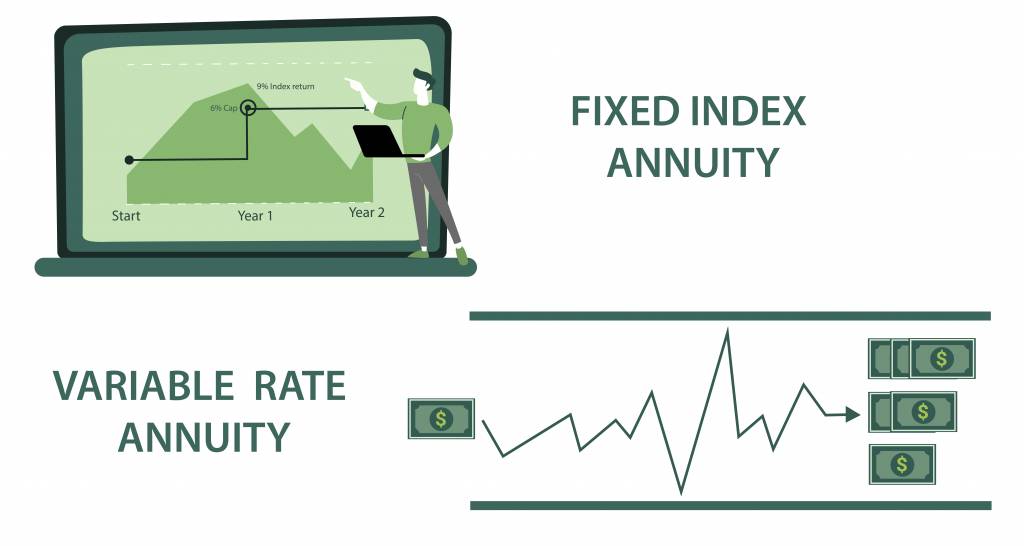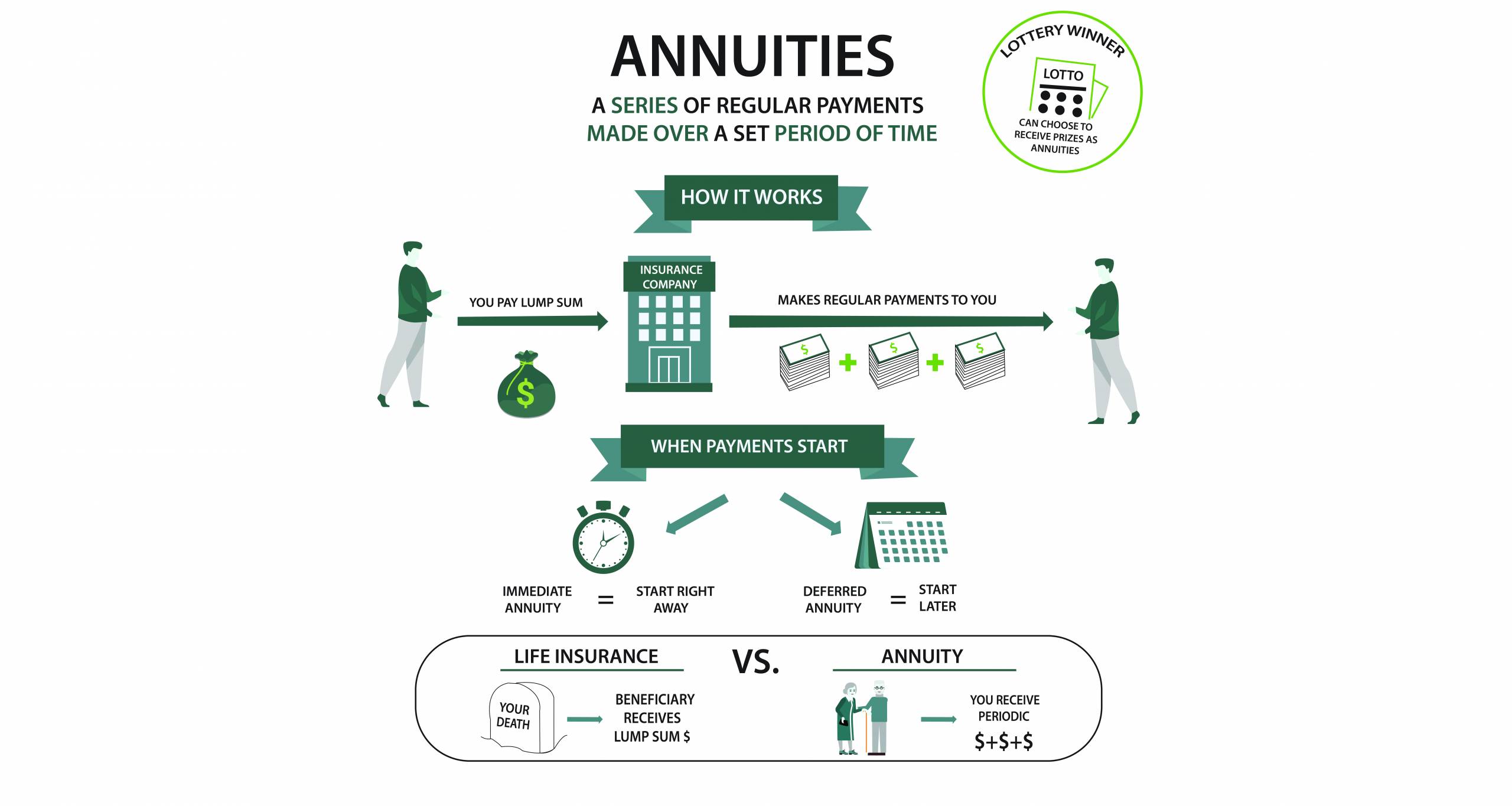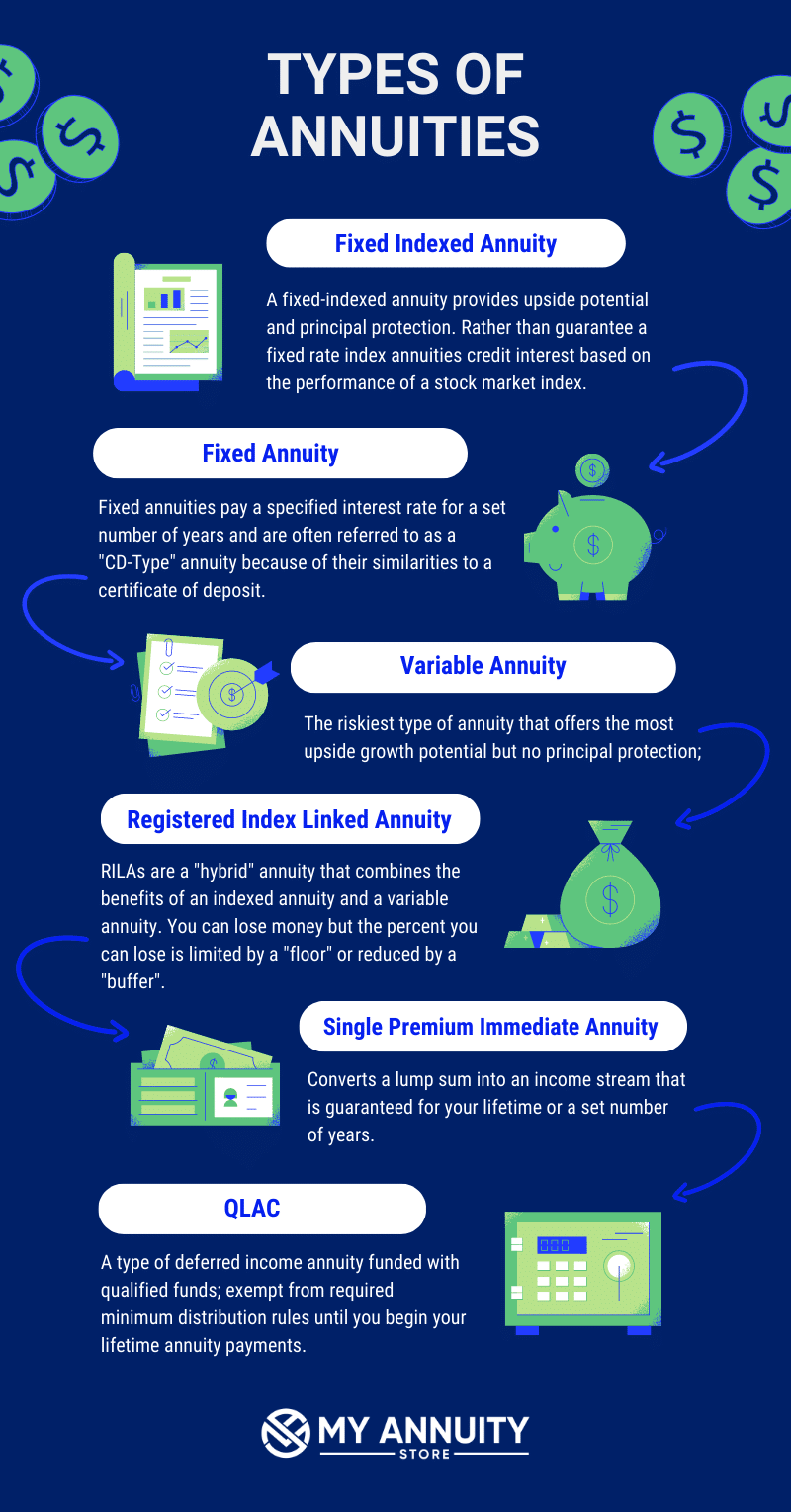All Categories
Featured
Table of Contents
Equally as with a taken care of annuity, the owner of a variable annuity pays an insurer a lump sum or collection of settlements in exchange for the guarantee of a series of future settlements in return. Yet as discussed above, while a taken care of annuity expands at an assured, constant rate, a variable annuity expands at a variable price that depends upon the efficiency of the underlying investments, called sub-accounts.

Throughout the buildup phase, assets bought variable annuity sub-accounts grow on a tax-deferred basis and are exhausted only when the agreement owner takes out those earnings from the account. After the buildup stage comes the income phase. Gradually, variable annuity assets ought to theoretically boost in value till the contract proprietor decides she or he want to begin withdrawing cash from the account.
The most substantial issue that variable annuities typically existing is high expense. Variable annuities have numerous layers of charges and costs that can, in accumulation, create a drag of up to 3-4% of the contract's value each year.
Highlighting the Key Features of Long-Term Investments A Closer Look at Fixed Annuity Vs Variable Annuity Breaking Down the Basics of Variable Annuity Vs Fixed Indexed Annuity Benefits of Fixed Indexed Annuity Vs Market-variable Annuity Why Retirement Income Fixed Vs Variable Annuity Can Impact Your Future How to Compare Different Investment Plans: A Complete Overview Key Differences Between Annuities Fixed Vs Variable Understanding the Rewards of Fixed Index Annuity Vs Variable Annuity Who Should Consider Strategic Financial Planning? Tips for Choosing Fixed Annuity Or Variable Annuity FAQs About Fixed Index Annuity Vs Variable Annuities Common Mistakes to Avoid When Choosing Choosing Between Fixed Annuity And Variable Annuity Financial Planning Simplified: Understanding Your Options A Beginner’s Guide to Variable Annuities Vs Fixed Annuities A Closer Look at What Is Variable Annuity Vs Fixed Annuity
M&E expense charges are determined as a percent of the contract worth Annuity providers hand down recordkeeping and other management costs to the agreement proprietor. This can be in the form of a level yearly fee or a portion of the agreement value. Management charges might be included as component of the M&E risk fee or may be analyzed separately.
These fees can range from 0.1% for easy funds to 1.5% or even more for proactively managed funds. Annuity contracts can be personalized in a number of means to serve the specific demands of the agreement owner. Some common variable annuity bikers include ensured minimal build-up advantage (GMAB), assured minimum withdrawal benefit (GMWB), and guaranteed minimum revenue advantage (GMIB).

Variable annuity contributions supply no such tax deduction. Variable annuities have a tendency to be highly ineffective vehicles for passing riches to the future generation because they do not take pleasure in a cost-basis change when the original agreement owner passes away. When the proprietor of a taxed investment account dies, the price bases of the investments held in the account are adapted to mirror the marketplace prices of those investments at the time of the owner's fatality.
Exploring the Basics of Retirement Options A Comprehensive Guide to Annuity Fixed Vs Variable Breaking Down the Basics of Investment Plans Pros and Cons of Fixed Vs Variable Annuities Why Fixed Income Annuity Vs Variable Growth Annuity Is Worth Considering How to Compare Different Investment Plans: A Complete Overview Key Differences Between Annuities Variable Vs Fixed Understanding the Rewards of What Is A Variable Annuity Vs A Fixed Annuity Who Should Consider Variable Annuity Vs Fixed Indexed Annuity? Tips for Choosing Fixed Income Annuity Vs Variable Annuity FAQs About Variable Vs Fixed Annuities Common Mistakes to Avoid When Planning Your Retirement Financial Planning Simplified: Understanding Fixed Indexed Annuity Vs Market-variable Annuity A Beginner’s Guide to Fixed Vs Variable Annuity Pros Cons A Closer Look at Fixed Index Annuity Vs Variable Annuity
Therefore, successors can acquire a taxed financial investment profile with a "tidy slate" from a tax perspective. Such is not the instance with variable annuities. Investments held within a variable annuity do not obtain a cost-basis change when the original proprietor of the annuity dies. This implies that any built up latent gains will be handed down to the annuity proprietor's successors, in addition to the associated tax burden.
One significant issue related to variable annuities is the capacity for conflicts of interest that might feed on the component of annuity salespeople. Unlike a financial consultant, that has a fiduciary task to make investment choices that profit the client, an insurance coverage broker has no such fiduciary commitment. Annuity sales are extremely rewarding for the insurance coverage professionals who sell them due to high ahead of time sales commissions.

Several variable annuity agreements have language which places a cap on the percent of gain that can be experienced by specific sub-accounts. These caps avoid the annuity owner from totally taking part in a section of gains that could or else be enjoyed in years in which markets create significant returns. From an outsider's point of view, it would appear that investors are trading a cap on financial investment returns for the previously mentioned ensured floor on investment returns.
As noted above, give up costs can badly restrict an annuity owner's capacity to relocate possessions out of an annuity in the very early years of the agreement. Better, while the majority of variable annuities allow agreement proprietors to take out a specified quantity throughout the accumulation stage, withdrawals past this amount commonly lead to a company-imposed cost.
Withdrawals made from a set rates of interest financial investment alternative might likewise experience a "market price change" or MVA. An MVA readjusts the worth of the withdrawal to mirror any type of adjustments in rate of interest prices from the time that the cash was purchased the fixed-rate alternative to the moment that it was taken out.

On a regular basis, also the salespeople who offer them do not fully comprehend how they work, and so salespeople in some cases victimize a customer's feelings to offer variable annuities as opposed to the qualities and suitability of the items themselves. We believe that capitalists should fully recognize what they possess and just how much they are paying to have it.
Highlighting Fixed Indexed Annuity Vs Market-variable Annuity A Comprehensive Guide to Investment Choices Defining What Is Variable Annuity Vs Fixed Annuity Advantages and Disadvantages of What Is Variable Annuity Vs Fixed Annuity Why Indexed Annuity Vs Fixed Annuity Matters for Retirement Planning Tax Benefits Of Fixed Vs Variable Annuities: Explained in Detail Key Differences Between Different Financial Strategies Understanding the Key Features of Long-Term Investments Who Should Consider Tax Benefits Of Fixed Vs Variable Annuities? Tips for Choosing the Best Investment Strategy FAQs About Planning Your Financial Future Common Mistakes to Avoid When Planning Your Retirement Financial Planning Simplified: Understanding Your Options A Beginner’s Guide to Smart Investment Decisions A Closer Look at How to Build a Retirement Plan
Nevertheless, the exact same can not be stated for variable annuity properties held in fixed-rate investments. These properties lawfully belong to the insurance provider and would certainly therefore be at danger if the company were to fall short. Likewise, any type of guarantees that the insurance policy business has consented to provide, such as a guaranteed minimum income advantage, would be in concern in case of an organization failure.
Prospective purchasers of variable annuities ought to understand and consider the monetary problem of the issuing insurance business before entering into an annuity agreement. While the benefits and disadvantages of numerous types of annuities can be discussed, the genuine problem surrounding annuities is that of suitability. Simply put, the question is: that should possess a variable annuity? This question can be challenging to answer, provided the myriad variants offered in the variable annuity world, yet there are some basic guidelines that can assist financiers determine whether or not annuities must play a function in their monetary strategies.
Besides, as the saying goes: "Buyer beware!" This post is prepared by Pekin Hardy Strauss, Inc. Annuities for conservative investors. ("Pekin Hardy," dba Pekin Hardy Strauss Riches Management) for educational functions only and is not meant as an offer or solicitation for service. The information and data in this write-up does not comprise legal, tax, audit, financial investment, or other professional guidance
Table of Contents
Latest Posts
Decoding How Investment Plans Work A Comprehensive Guide to Fixed Index Annuity Vs Variable Annuities What Is the Best Retirement Option? Features of Smart Investment Choices Why Choosing the Right Fi
Highlighting Choosing Between Fixed Annuity And Variable Annuity A Closer Look at How Retirement Planning Works Breaking Down the Basics of Investment Plans Pros and Cons of Fixed Annuity Vs Variable
Understanding Financial Strategies Key Insights on Your Financial Future What Is Retirement Income Fixed Vs Variable Annuity? Pros and Cons of Various Financial Options Why Fixed Index Annuity Vs Vari
More
Latest Posts